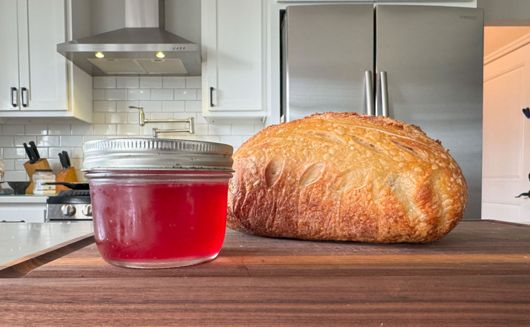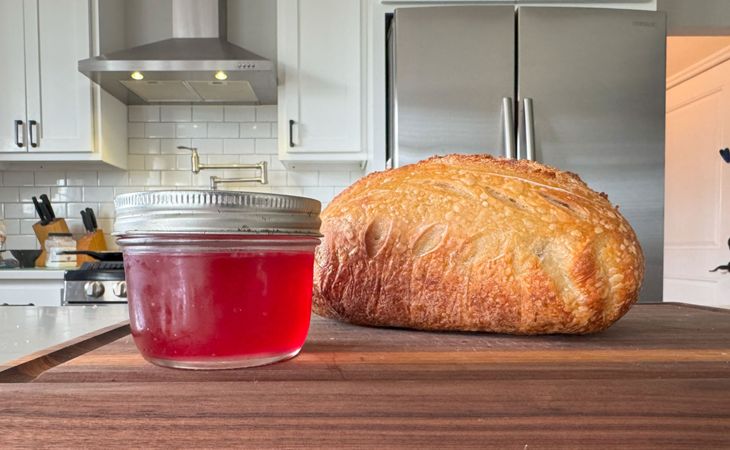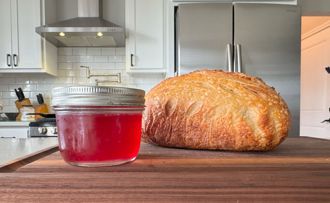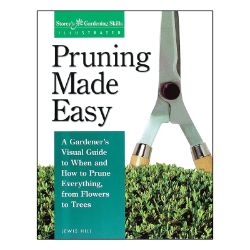Choosing a Location for Raspberry Plants
The best way to succeed is to plan before you plant. Concerning location: do you know where you want to plant your new raspberry plants? Avoid future obstacles by considering all aspects of the planting site, such as:
- Cross-pollination
- Sun and good soil
- Surroundings
- Spacing
NOTE: This is part 3 in a series of 11 articles. For a complete background on how to grow raspberry plants, we recommend starting from the beginning.
Cross-Pollination
Most raspberry varieties are self-pollinating (or self-fertile), meaning your raspberry plants will fruit when they mature, without requiring the availability of another raspberry variety’s pollen. If you are growing all the same variety of raspberry, your plants will have a fruit crop. Similarly, if you are growing several different varieties of raspberry, you may have a larger fruit crop, as is the nature of most cross-pollinated fruit.
Sun and Good Soil
Raspberry plants thrive in a growing location that receives full sun and has a well-drained, fertile soil. Full sun is at least 6 to 8 hours of sunlight during the growing season. Light is vital to fruit production and fruit quality, and also helps minimize the risk of fungal issues, so this is an essential part of choosing a location for your raspberry plants.
A well-drained soil will help keep a raspberry plant’s roots healthy and free of rot. Because raspberry plants are rhizomes, they send up new canes from the roots, so root health is especially important for raspberry plants. If your native soil is composed of heavy clay that retains water after rainy weather, first look for a different planting site for your raspberry patch. Similarly, if your site has fast-draining, sandy soil, the raspberry plants may exhibit water-related stress (similar to conditions of drought) and may require more-frequent watering. For your growing success, we do not recommend planting raspberry plants in rocky or heavy, pure-clay soils. If you can’t plant elsewhere, you can try amending the soil of your planting site prior to planting your raspberry plants.
Soil amendments greatly depend on your individual location, so communicating with your local county cooperative extension is recommended. In general – to help with water distribution – you can add coir, like our Coco-Fiber Growing Medium, to your raspberry planting hole, or mix in one-third sphagnum/peat to the soil at planting time. Sphagnum/peat can lower the soil pH, so if your soil pH is already lower than raspberry plants tolerate (6.0 – 6.8), this may not be the best option.
Alternately, to avoid directly dealing with your native soil, you can try planting your raspberry plants in containers. Start with a pot that accommodates each raspberry plant’s current root system (with room to grow). Most new raspberry plants can be planted in a 3-gallon container to start, and you can move container-grown raspberry plants into larger containers as the plants outgrow them.
Even if your yard isn’t the most ideal location, take heart. Raspberry plants can be very adaptable and they respond well to soil additives like compost or fertilizers, so they can get along well even where the soil is nutritionally poor. Just remember to avoid planting sites with extremely heavy soils and poor drainage and ensure they have the necessary full-sun requirement.
Surroundings
A home raspberry planting can be a landscaping asset, so choose a planting site with this in mind. Imagine your raspberries as full-grown plants and observe the surroundings:
- Are there cables, pipes, or other lines and utilities you should avoid underground?
- Is there a sidewalk or foundation within the range of your raspberry plant’s roots?
- Might your raspberry plant block the view of something you want to see once it’s fully grown?
- Will neighboring trees be in the way or block sunlight from your raspberry plants as they grow?
Even a year or two after planting, a raspberry plant can be very difficult to move with stress-free success, so take the time to plant in just the right place the first time around.
Spacing
Ordinarily, planting raspberry plants near structures like patios is not problematic because the soil beneath them is dry and compacted. The raspberry’s roots will not be as encouraged to grow into this area; however, it’s better to plant with at least 4 to 5 feet of space between these structures and your raspberry plants. A safe distance is somewhere beyond your raspberry plant’s estimated maximum spread. By planting raspberry plants far enough away from man-made structures, you can avoid problems in the near or distant future.
Space Between Plants
Depending on the variety you choose, the spacing may vary. As a general rule, most raspberry plants naturally grow (or can be maintained with pruning) within a 4 to 5 foot range, both tall and wide. Use the raspberry plant’s mature width as your guide for spacing between plants.
- Plant raspberry plants 3 to 5 feet apart with spacing between rows 6 to 8 feet apart.
- Do not plant Red, Gold or Purple raspberries within 75 to 100 feet of black raspberries. Black raspberries may be more susceptible to viral diseases carried by aphids to and from nearby raspberry plants.
Space for Future Plantings
When you’re new to fruit gardening and growing raspberry plants, or you’re planting in a location that is new to you, it’s wise to start with just a few raspberry plants. Later on, especially after you have reaped the rewards of growing your own raspberries, you may want to expand your home raspberry patch. If you plan ahead and leave room for additional berry plants, or even fruit trees and other garden plants, then the space will be available when you are ready to expand, without hindering the growth and development of your existing raspberry plants.




















